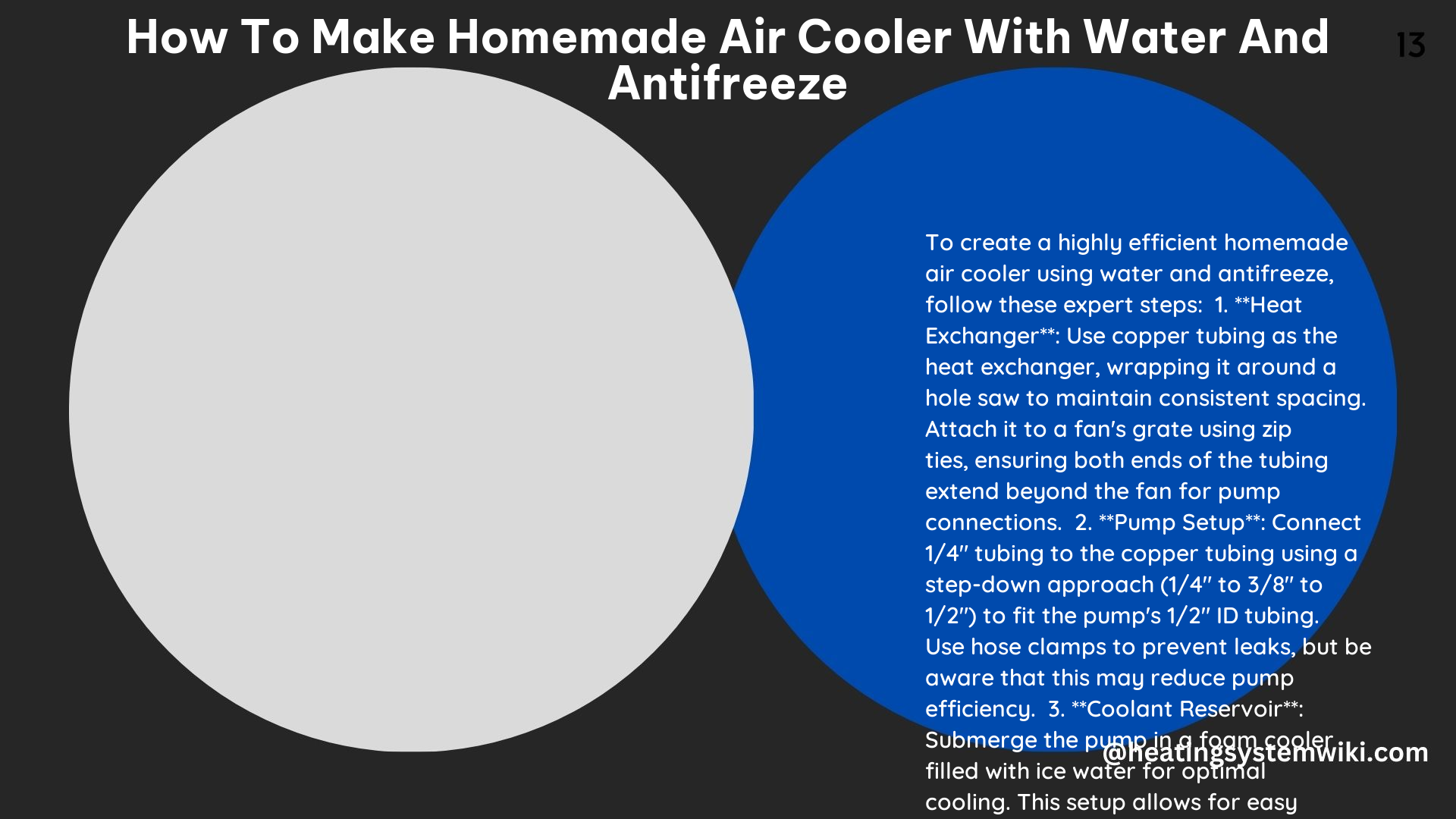Creating a homemade air cooler with water and antifreeze is a cost-effective and energy-efficient way to beat the heat during the hot summer months. This DIY project allows you to customize the cooling system to your specific needs and preferences, providing a personalized cooling solution for your living or workspace. In this comprehensive guide, we’ll walk you through the step-by-step process of building your own homemade air cooler, complete with technical specifications and expert tips to ensure a successful outcome.
Gather the Necessary Materials
To construct your homemade air cooler, you’ll need the following materials:
- 8×8 Heat Exchanger (Water-to-Air): This is the core component that facilitates the heat transfer process, allowing the water to absorb heat from the air.
- 7″ Fan: The fan is responsible for circulating the cooled air throughout the desired space.
- Small Water Pump: This pump is used to circulate the water through the heat exchanger.
- Copper or Aluminum Tubing: The tubing is used to connect the heat exchanger to the water pump.
- Clear Vinyl Tubing (3/8″ ID): This tubing is used to transport the water from the heat exchanger to the water pump.
- Water: The water is the primary cooling medium that absorbs heat from the air.
- Ice Packs or Frozen Jugs/Blocks: These can be used to further lower the temperature of the water, enhancing the cooling effect.
- 12V DC Pump (4.8W): This low-power pump ensures efficient water circulation.
- 12V DC Fan (10W): The fan, powered by a 12V DC source, provides the necessary airflow.
- Antifreeze: Adding antifreeze to the water helps prevent freezing and provides rust prevention, extending the lifespan of the system.
Assemble the Heat Exchanger

- Connect the Heat Exchanger to the Water Pump: Using the copper or aluminum tubing, securely attach the 8×8 heat exchanger to the water pump. Ensure that the tubing connections are tight and secure using hose clamps.
- Attach the Fan: Secure the 7″ fan to the heat exchanger using zip ties or clamps. Make certain that the fan is positioned to direct the airflow towards the heat exchanger.
Prepare the Cooling System
- Fill the Heat Exchanger with Cold Water: Fill the heat exchanger with cold water, either directly from the refrigerator or by adding ice packs or frozen jugs/blocks to lower the water temperature.
- Circulate the Water: Turn on the 12V DC water pump to start circulating the water through the heat exchanger. As the water flows, it will absorb heat from the air, effectively cooling it down before it is released into the room.
Add Antifreeze for Protection
- Mix the Antifreeze: Add antifreeze to the water in the heat exchanger to prevent freezing and provide rust prevention. The recommended ratio is typically 50% water and 50% antifreeze, but you can adjust the mixture based on your local climate conditions.
- Ensure Proper Circulation: After adding the antifreeze, turn on the water pump again to ensure the mixture is circulating properly through the system.
Test and Adjust the System
- Power on the Fan: Turn on the 12V DC fan and adjust the speed to your desired level. The cooled air should now be circulated throughout the room.
- Monitor the Performance: Observe the cooling performance of the system and make any necessary adjustments to the fan speed or water temperature to optimize the cooling effect.
By following these detailed steps and utilizing the technical specifications provided, you can successfully create a highly efficient and customized homemade air cooler using water and antifreeze. This DIY project not only saves you money but also allows you to tailor the cooling system to your specific needs, ensuring a comfortable and refreshing indoor environment during the hot summer months.
